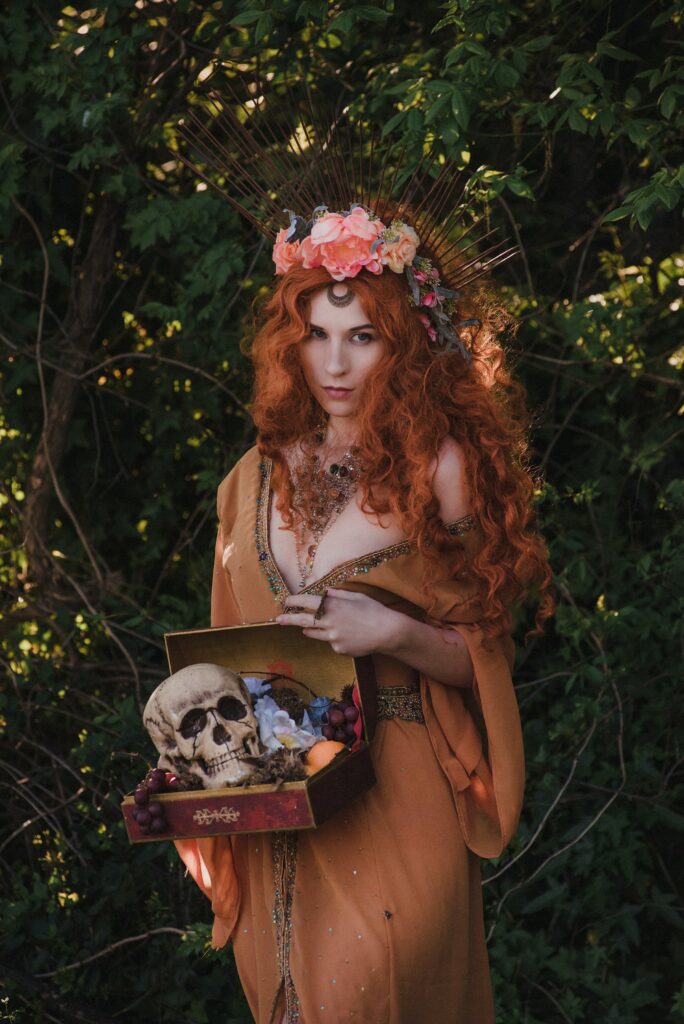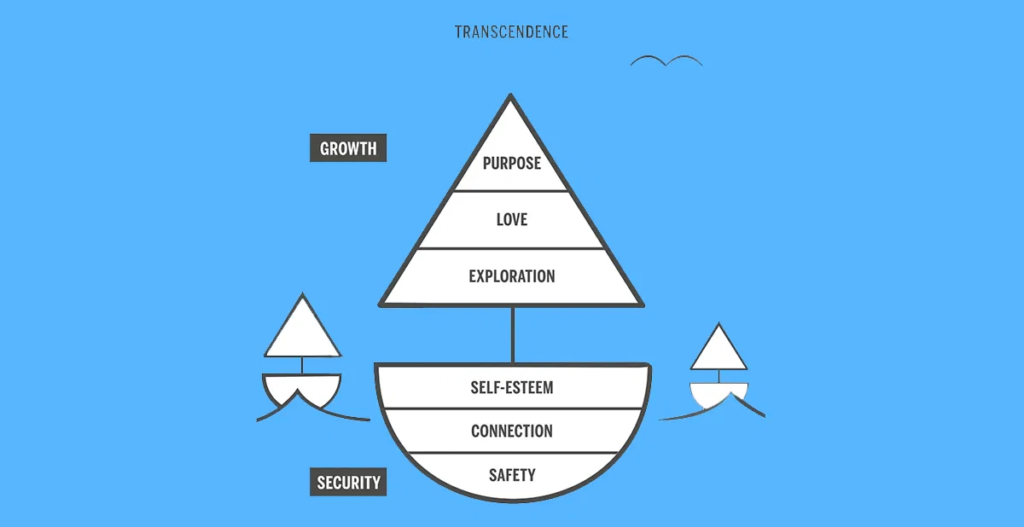Hope is usually associated with positive aspects of life, but it also has its dark side. It is essential to differentiate between the two.
Hope is a powerful state of mind. It is often associated with the good, but like most things in life, it has both positive and negative aspects. It can be spirit-lifting and precious, but it can also hamper action and be crushingly harmful.
Both aspects of hope can be seen in the excellent film The Shawshank Redemption. On the one hand, the protagonist, Andy Dufresne, played by Tim Robbins, believes that:
“Hope is a good thing, maybe the best thing, and no good thing ever dies.”
On the other hand, his best friend, Red, played by Morgan Freeman, thinks otherwise:
“Hope is a dangerous thing. Hope can drive a man insane.”
Who is right, Andy or Red?
Pandora’s box
Greek mythology illustrated the ambivalence of hope already a few thousand years ago. Based on Greek legends, the first woman was created when the gods gave shape to a figure made of earth. This woman was called Pandora, she of the famous box (which in reality was a jar). Zeus entrusted Pandora with a big jar and told her not to open it under any circumstances, as the consequences would be terrible.
Pandora did what any of us would do in the same situation: she opened the damn jar (which was later replaced by a box in the modern version of the legend, hence the expression “opening Pandora’s box”). It is curious that both the Bible, with the story in Genesis about Eve and the forbidden apple, and the Greek mythology, with Pandora’s story, blame all the evils in the world on women’s curiosity. But that’s a story for another day; today we were talking about hope.
What were the terrible contents of Pandora’s jar? Were they so terrible? Well, they couldn’t be worse. We all know how mischievous the Greek gods could sometimes be, and this wasn’t an exception. Zeus entered in that box all the evils that would make humans’ lives miserable henceforth: violence, pestilence, misery, murder, want, and many others. This is the story of the creation of all those ills that wouldn’t abandon humankind from there on.
Pandora, the poor girl, realised she had made a mistake when she saw all those bad things leaving the jar/box, so she hastened to close it as quickly as possible. There was only one last evil left in the box: hope.

The ambivalence of hope
Pandora’s story raises more questions than answers. Does this mean hope is evil and at the same level as violence and illness? We still feel hope, but if it remained in the box, it shouldn’t exist outside; maybe that means we are only feeling its positive aspects, and the negative ones were left behind in that box? Perhaps hope was evil but became something good when it was left alone and wasn’t surrounded by all the other evils anymore? What would have happened if hope was released instead of sickness or murder?
There are multiple interpretations of the story. That’s the charm of mythology and legends; it is up to the listeners to interpret them as they wish.
My interpretation is that hope is ambivalent, and it can be terrible or wonderful. We all know the wonderful part of it, but the Greeks reminded us that it could also be harmful. That’s why it was in that box with all the other evils.
Blind hope makes us passive. If you hope that your son will stop taking drugs, or that dream job will appear out of thin air, or your flailing relationship with your partner will improve because you love each other very much, you may not take the right steps to solve those issues. Hope can sometimes breed inaction; in that sense, it’s pernicious.
Another potential negative aspect of hope is that it can prolong our torment. It can create false expectations and make us suffer for longer and more intensely than if we didn’t have any hope. Hope makes us fight and stay longer in that fight than if we were hopeless, and sometimes it pays to be hopeless.
We all know the wonderful and positive aspects of hope. Hope can give us the will to carry on and fight, and can help us succeed where we wouldn’t otherwise. It can be a powerful state of mind. It can be a wondrous feeling to have.
Yes We Can!
A great example of the power of hope was Obama’s campaign for his first presidency in 2008, represented in the famous slogan: “Yes We Can!”. This was a call for change, a call for a better future. This call exuded hope from all its pores, and this is what made it so powerful and moved people with it. Hope has a strong emotional charge and, as such, has a lot of power if used well. (Trump used another strong emotion, rage, to succeed in his own presidential campaign in 2016, showing once again that emotions have a strong influence on our decisions).
Obama was able to mobilise thousands of volunteers, break records in donations and win two presidential elections with his focus on hope, by showing that a different, better world was possible. Any aspiring leader can learn a thing or two from this.
Hope can be a powerful motivator and an excellent call for action. A leader with an inspiring vision who can instil hope in her followers will be able to engage them and influence them. As we mentioned in the very first sentence of this post, hope is a powerful state of mind. Hope is a double-edged sword, but it can bring huge benefits if used properly.
Transcending with hope
The psychologist Scott Barry Kaufman revisits Maslow’s famous hierarchy of needs in his book Transcend. He replaces Maslow’s pyramid with a sailboat: Safety, Connection and Self-esteem form the hull of the boat (security), and Exploration, Love and Purpose the sail (Growth).

Purpose is at the top of the sail.
It is vital for happiness and wellbeing (as such, I have written extensively about it, for example, in my last post when linking it with lion tracking). Kaufman mentions Love and Exploration as two elements of our paths towards Purpose. Another one is hope.
Here, again admitting to the ambivalence of hope, Kaufman also distinguishes between two types of hope, one active and one passive, and he admonishes us against the latter. Hope will help us get to our purpose in life only if it is linked to action. Hope is not about waiting for something to happen but something that pulls us towards achieving it. For that, we need to devise strategies and take action.
As Kaufman notes:
“A hope mindset fosters belief that multiple paths are possible to get where you want to go and helps you remain flexible when any one pathway seems blocked. Hopeful people are more likely to interpret failures as opportunities for growth, attribute resources and strategies for handling setbacks, and recognise the potential barriers to goal attainment.”
This, of course, only applies to active hope. Kaufman makes a clear distinction between this type of hope and the one that is passive, whereby a person hopes something will happen and waits for it to happen without taking ownership or action.
One type of hope is enabling and empowering; the other is paralysing and stultifying.
Hope in hopeless situations
Viktor Frankl, famous psychologist, holocaust survivor and author of the now classic book Man’s Search for Meaning, thought hope was a great enabler for a happier and more fulfilling life. Hope helped him survive as a Jew in a concentration camp run by nazis.
As he wrote in his book:
“Once hopeless, my life is now hope-full, but it did not happen overnight. For what then matters is to bear witness to the uniquely human potential at its best, which is to transform a personal tragedy into a triumph, to turn one’s predicament into a human achievement.”
Frankl teaches us that even the harshest situations in life can be great teachers if we have the right attitude and know how to use them for our learning and advantage. Hope is an essential element here. Without hope, we cannot survive the bad situations and hardships we find ourselves in.
For Frankl, hope was a power and strength to be maximised to achieve a better and more meaningful life.
Hope for a better future of work
Hope is a double-edged sword.
It has two differentiated blades: the good and the bad. The good one calls us to action, gives us the energy to overcome challenging situations and problems, and it is necessary to find purpose in life and live a fulfilling life.
The bad one is passive and doesn’t let us advance or take necessary action. It makes life tougher, as disappointment is more prominent when that mislocated hope doesn’t become a reality.
Both hopes are part of life and will always be. The trick is to embrace and welcome the positive, active hope and identify the passive, harmful one to abandon it immediately.
I started this blog because I believe we build the future in the present and we have the agency to build a better future, and I wanted to contribute to a better, more human and humane future of work. The future isn’t like the weather, that happens to us without having any control over it; we make it happen through our actions.
An essential condition to build a great future is to have active, positive hope about the possible futures in front of us. Without that hope, we won’t believe this future is possible, and we will fail to build it.
This hope can only be of the positive sort, of the one calling us to action. Like Frankl, I am hope-full, not hopeless, as I believe we have the right resources and tools to build that better future. The challenges and hurdles we’ll face will be demanding, of course, but I hope and know we’ll get there eventually.